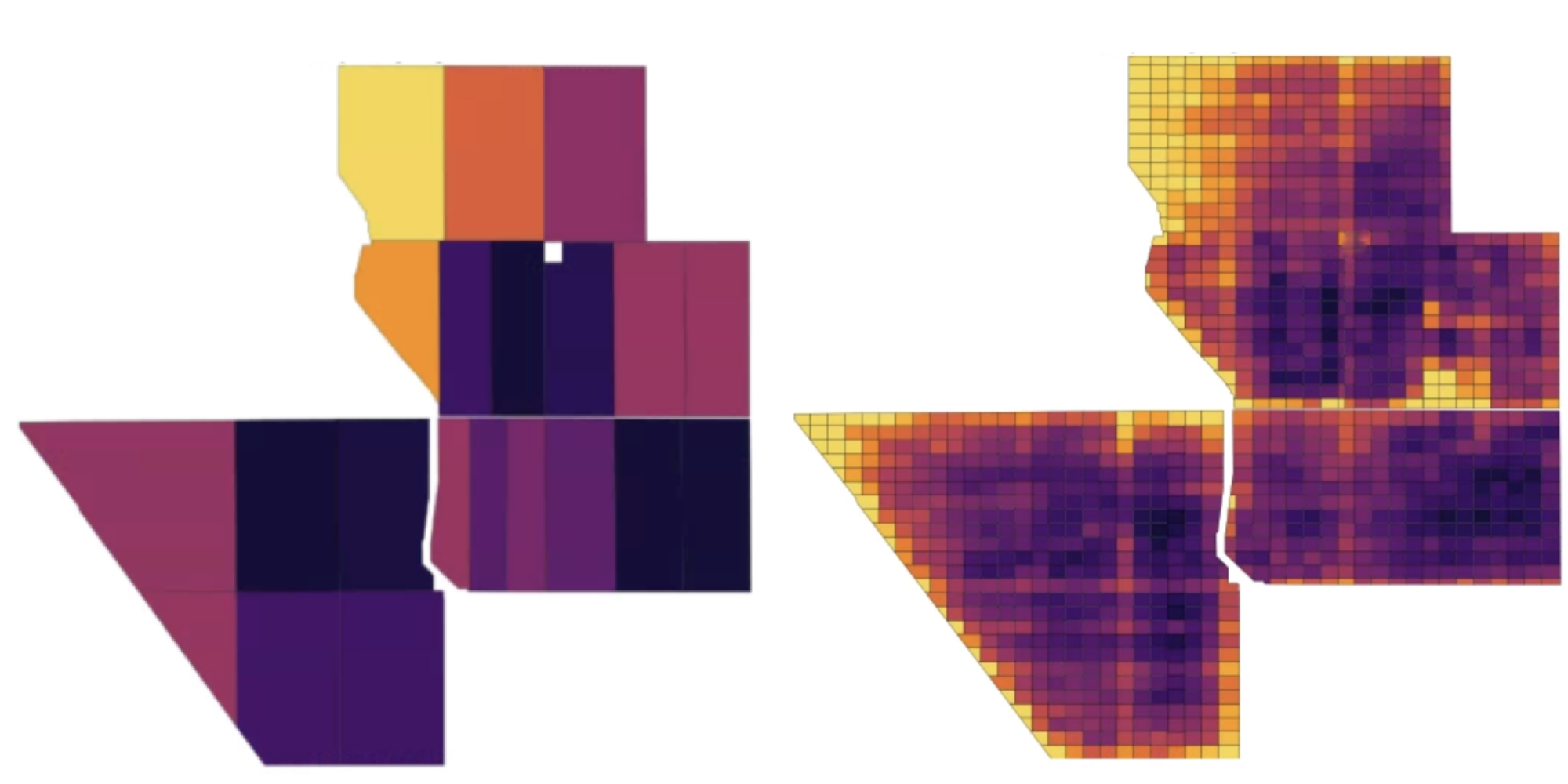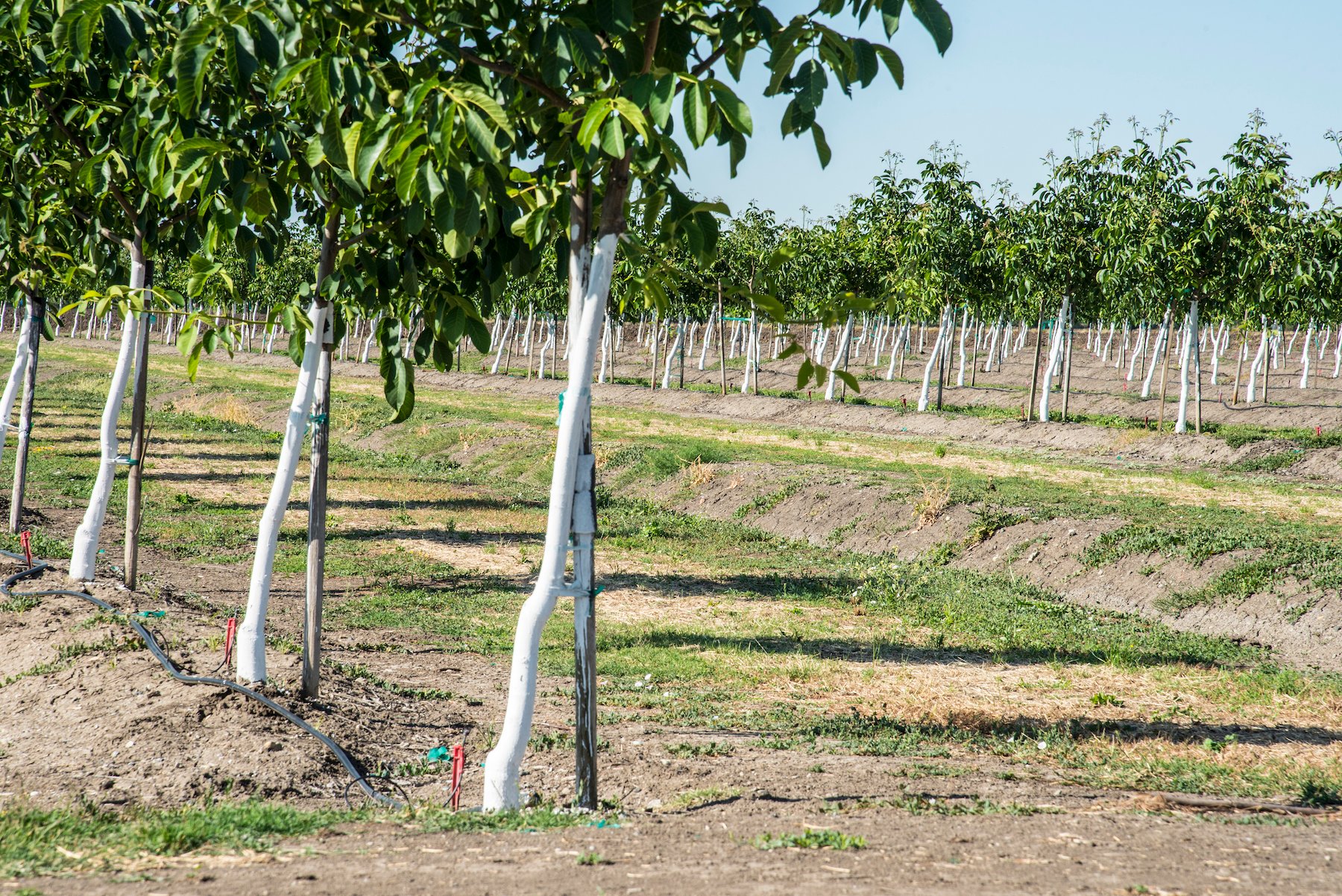California’s tree nut acreage is increasing. In combination with new water usage restrictions—including the Sustainable Groundwater Management Act (SGMA)—this fact presents a challenge to the industry: growers must constantly improve how they irrigate their fields.
Fortunately, they have help. University of California researchers, in partnership with The California Walnut Board and the Almond Board of California, are investigating new irrigation practices that take into account different sources of variability within orchards. Some research teams are using aerial data from Ceres Imaging to evaluate their findings.
"The idea is for us to develop management strategies that help growers cope with water issues,” says Isaya Kisekka, Ph.D. He's an associate professor at UC Davis in the Department of Land, Air, and Water Resources as well as the Department of Biological and Agricultural Engineering. Kisekka is among the scientists leveraging Ceres Imaging data, and has ongoing irrigation research projects in both almonds and walnuts.
With availability of water a top concern for both the state and growers, researchers like Kisekka are scrutinizing the details of common accepted irrigation practices in a dedicated effort to improve them. Here are a few key concepts they’re targeting in regard to water usage.
Spatial variability
An orchard's characteristics are rarely uniform throughout: some parts of an orchard produce higher yields than others. There are many reasons for spatial variability, but one of the primary reasons is water. So how does a grower manage irrigation to address this?
Allan Fulton, an irrigation and water resources farm advisor who also uses Ceres Imaging data, suggests zone irrigation management. This approach divides the farm into zones based on soil characteristics, such as water infiltration rates, water holding capacities, and soil fertility and salinity.
Fulton says some existing irrigation systems can be retrofitted with automated or manual control valves, which allows growers to avoid the cost of investing in completely new variable rate irrigation systems. Limiting the plan to a small, manageable number of zones can produce unusual zone patterns, rather than a conventional grid, and there will still be some variability in yield—but there will be less variability than when the entire orchard is irrigated in the same way.

Zone management in orchards can look different depending on irrigation setup and management goals. Regardless of your approach, Ceres Imaging's Cumulative Stress Index can help you map spatial variability in orchard stress.
“We’re evaluating these [retrofitted] systems for their ability to help growers manage soil variability and get more uniform production, and to optimize their water applications,” Fulton says.
Water needs by tree variety and age
Many almond growers have multiple varietals within a single orchard, with key growth stages such as bloom and hull split occurring at different times for different trees. This also means different trees have different water requirements.
Using a remote irrigation control system, researchers are exploring different methods for irrigating each variety independently—and assessing whether doing so can improve water use efficiency, nut quality, yield, and profitability.
Meanwhile, in Tehama County, California, Kisekka and his team are measuring evapotranspiration (ET) in first–, second– third– and fourth-leaf almond trees to quantify the difference in water use in young almonds. Using ground-based ET flux towers and remote sensing, their goal is to determine crop coefficients growers should use when irrigating young trees as they age.
Outlook for recommendations
While these and several other industry-backed experiments are well underway, it's difficult to predict when exactly growers can expect site-specific changes in irrigation recommendations.
“California is very big, with different climates, hydrology, and irrigation practices [throughout the state],” Kisekka notes. Even conclusive results from a test site in the Sacramento Valley, for example, could have different implications for an orchard in the southern part of the Central Valley.

Varietal, age, and soil conditions all affect an individual tree's water needs. Much new research focuses on understanding those differences.
“What we’re doing now,” says Fulton, “is adding more orchard sites, changing the growing conditions, soils, winter rainfall … and just trying to test what we learn under a wider range of growing conditions. We’re moving up and down the Central Valley, from the Sacramento Valley to the San Joaquin Valley.”
Especially working with deep-rooted perennials, results can't be rushed: in tree nuts, researchers must consider whether the results of studies conducted over two to three years reflect what might happen in ten years or more.
Even if some studies are years away from completion some high-level take-aways are already clear. Chief among them: "It pays to monitor tree stress," Fulton finds, and, "traditional and new options to monitor tree water stress are available now.”
Ceres Imaging is proud to assist research efforts aimed at helping growers build more sustainable and more profitable operations. For more information on using aerial data to monitor water stress in your orchard, contact us.
